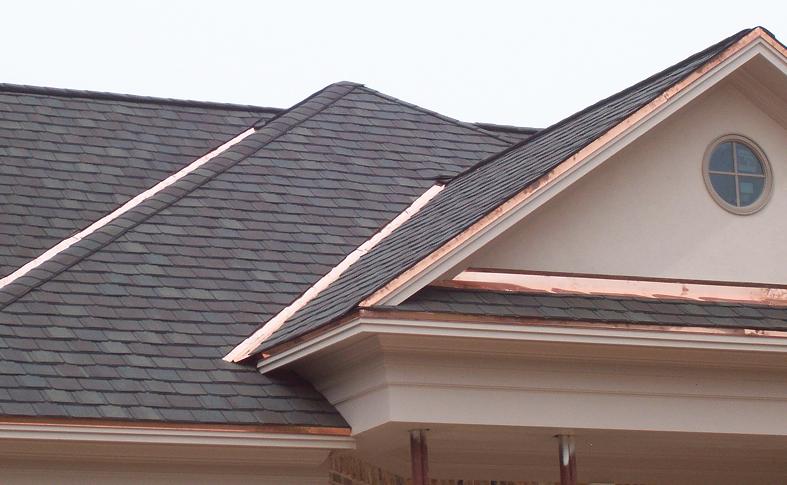Even a well-built roof can get stains; this unsightly problem can not only affect the overall look of the top of a house but can lead to costly damage in the future. Therefore, it is important to know how such discolorations occur and how to get rid of them safely in order to have a neat and clean roof!
of a house but can lead to costly damage in the future. Therefore, it is important to know how such discolorations occur and how to get rid of them safely in order to have a neat and clean roof!
Bad Algae
When roofing material turns black, it is a good indication that the area has become a breeding ground for an algae known as gleocapsa magma. Species like these have spores that are easily carried by the wind and can land on housing surfaces; the presence of this unsightly occurrence accounts may appear on many roofs in the same area. It likes to inhabit surfaces that are warm and humid where it appears on slopes that are shaded or in areas which lack direct sunlight. It only requires moisture, nutrients and enough warmth to grow and quickly spread. It is fed by inorganic material like limestone fillers that are present in asphalt shingles. As the algae establishes itself across the surface of the roof, it leaves a visible black streaking.
Replacement vs. Cleaning
Stains caused by algae on shingles is not always a sign that they need to be replaced. The presence of this material does not necessarily equate to the need for replacement as in many cases all that is required is cleaning. It can also require experts to clean and restore the structure to its original look and to protect the longevity of the roof. As many structures suffer from such problems, it may be recommended that the system be replaced. Hiring a reputable contractor to conduct an expert examination may reveal that the surface only requires a thorough cleaning instead of replacement; this option would certainly financially beneficial to the owner of the building.
Ignore the Issue
It is often easy for the problem to be initially avoided, growing used to the increasingly unsightly appearance of the roof. Some might even say that it makes the structure looked pleasantly ‘aged’ rather than unattractive. If algae is just ignored and not cleaned from the surface, it can decrease the longevity of the roof.
It is important to realize that algae is a living organism that needs food and an inhabitable environment. One of its favorite foods is the limestone filler which is the primary element of asphalt shingles, which it can easily thrive upon in moist and shady surfaces, consuming the shingle’s granules. These granules are vital to the health of the shingles as they deflect the ultraviolet rays away from the surface. If the granules are completely consumed and disappear, the attic underneath could become increasingly hot, causing a significant rise in air-conditioning bills and ultimately result in having to replace the roof much sooner than normal.
Harmless Chemicals
Using the right chemicals and proper procedure to clean the algae will not cause any harm to gutters and landscaping. There are non-pressure methods that won’t damage the property as well as chemicals that are not harmful to the grass, bushes and other vegetation. An experienced contractor can advise which methods and chemicals should be used that are recommended by institutions such as GAF and ARMA (Asphalt Roofing Manufacturers Association).
Problems with some algae may only need cleaning if addressed at an early stage. Learning some of the important aspects about the stains caused by algae would be helpful; it would be important to learn that these black spots can eventually result in a severe enough condition that could result in expensive replacement. So get rid of those stains and save the roof!
For Help With Your Houston Roof, Call Schulte Roofing Today !
Are you searching for a Houston roof company to help with your roof staining problems? Contact Schulte Roofing at 800-367-7663; they provide excellent service to the greater Houston area and can handle all types of roofing issues!
